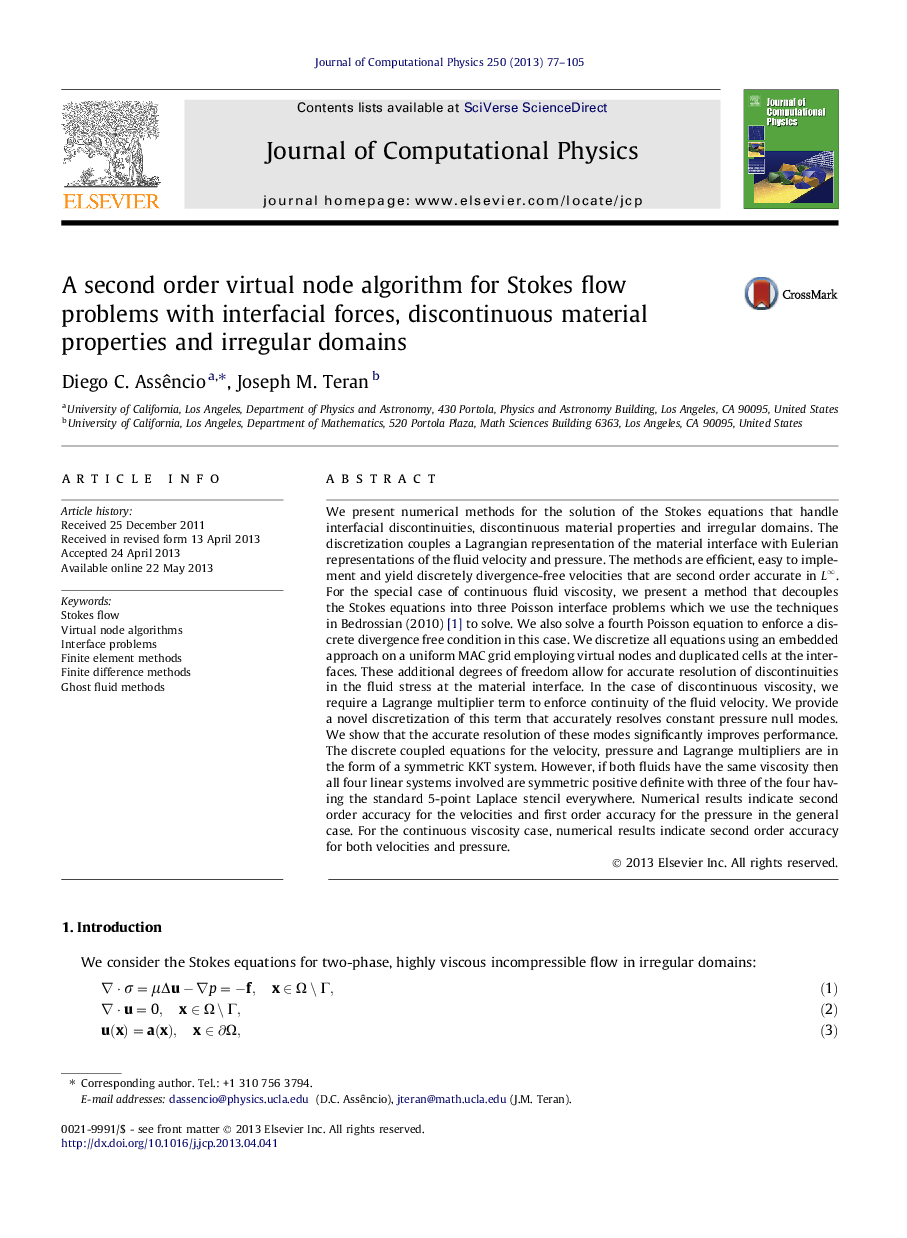| کد مقاله | کد نشریه | سال انتشار | مقاله انگلیسی | نسخه تمام متن |
|---|---|---|---|---|
| 6933633 | 867752 | 2013 | 29 صفحه PDF | دانلود رایگان |
عنوان انگلیسی مقاله ISI
A second order virtual node algorithm for Stokes flow problems with interfacial forces, discontinuous material properties and irregular domains
دانلود مقاله + سفارش ترجمه
دانلود مقاله ISI انگلیسی
رایگان برای ایرانیان
کلمات کلیدی
موضوعات مرتبط
مهندسی و علوم پایه
مهندسی کامپیوتر
نرم افزارهای علوم کامپیوتر
پیش نمایش صفحه اول مقاله

چکیده انگلیسی
We present numerical methods for the solution of the Stokes equations that handle interfacial discontinuities, discontinuous material properties and irregular domains. The discretization couples a Lagrangian representation of the material interface with Eulerian representations of the fluid velocity and pressure. The methods are efficient, easy to implement and yield discretely divergence-free velocities that are second order accurate in Lâ. For the special case of continuous fluid viscosity, we present a method that decouples the Stokes equations into three Poisson interface problems which we use the techniques in Bedrossian (2010) [1] to solve. We also solve a fourth Poisson equation to enforce a discrete divergence free condition in this case. We discretize all equations using an embedded approach on a uniform MAC grid employing virtual nodes and duplicated cells at the interfaces. These additional degrees of freedom allow for accurate resolution of discontinuities in the fluid stress at the material interface. In the case of discontinuous viscosity, we require a Lagrange multiplier term to enforce continuity of the fluid velocity. We provide a novel discretization of this term that accurately resolves constant pressure null modes. We show that the accurate resolution of these modes significantly improves performance. The discrete coupled equations for the velocity, pressure and Lagrange multipliers are in the form of a symmetric KKT system. However, if both fluids have the same viscosity then all four linear systems involved are symmetric positive definite with three of the four having the standard 5-point Laplace stencil everywhere. Numerical results indicate second order accuracy for the velocities and first order accuracy for the pressure in the general case. For the continuous viscosity case, numerical results indicate second order accuracy for both velocities and pressure.
ناشر
Database: Elsevier - ScienceDirect (ساینس دایرکت)
Journal: Journal of Computational Physics - Volume 250, 1 October 2013, Pages 77-105
Journal: Journal of Computational Physics - Volume 250, 1 October 2013, Pages 77-105
نویسندگان
Diego C. Assêncio, Joseph M. Teran,